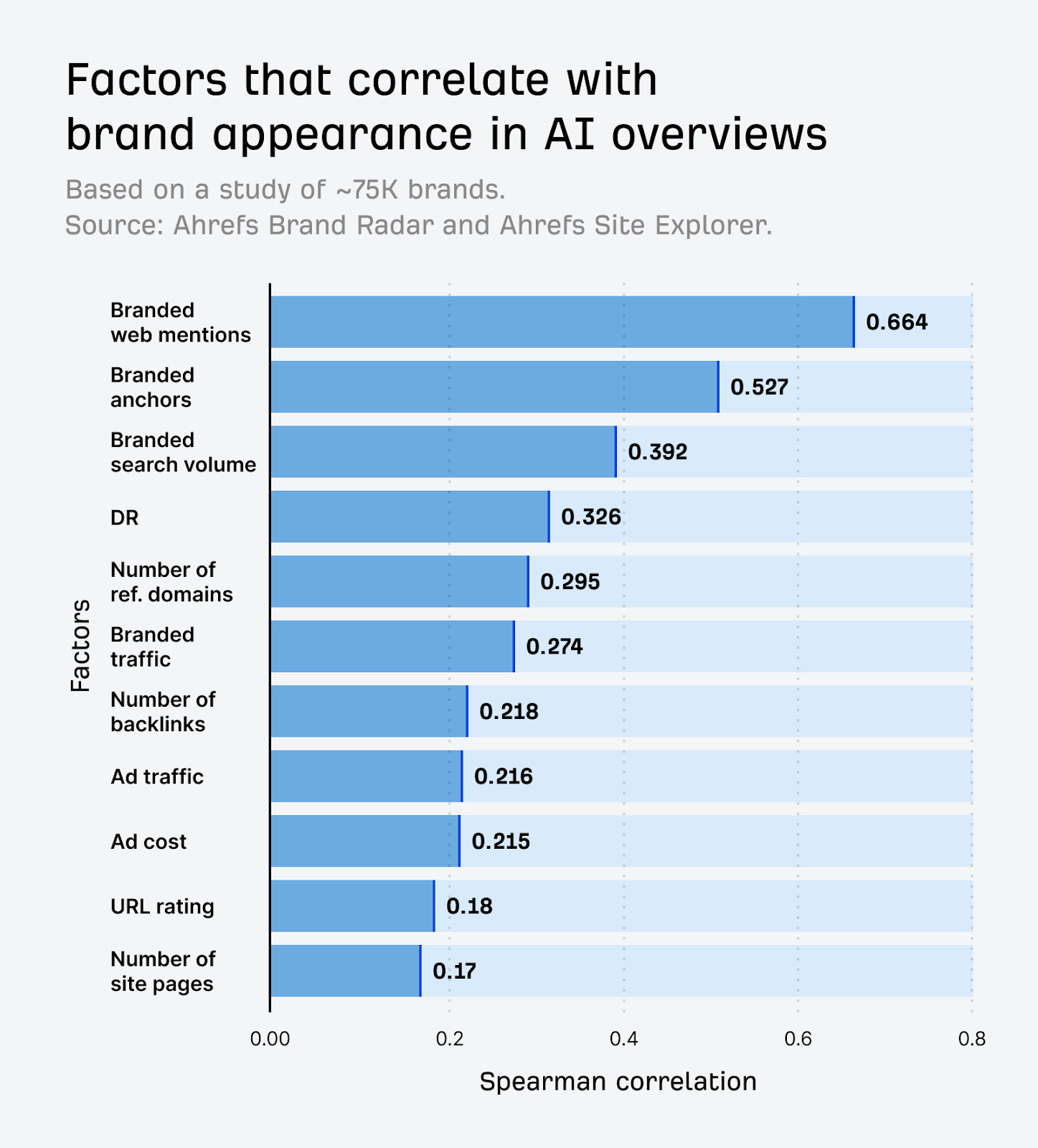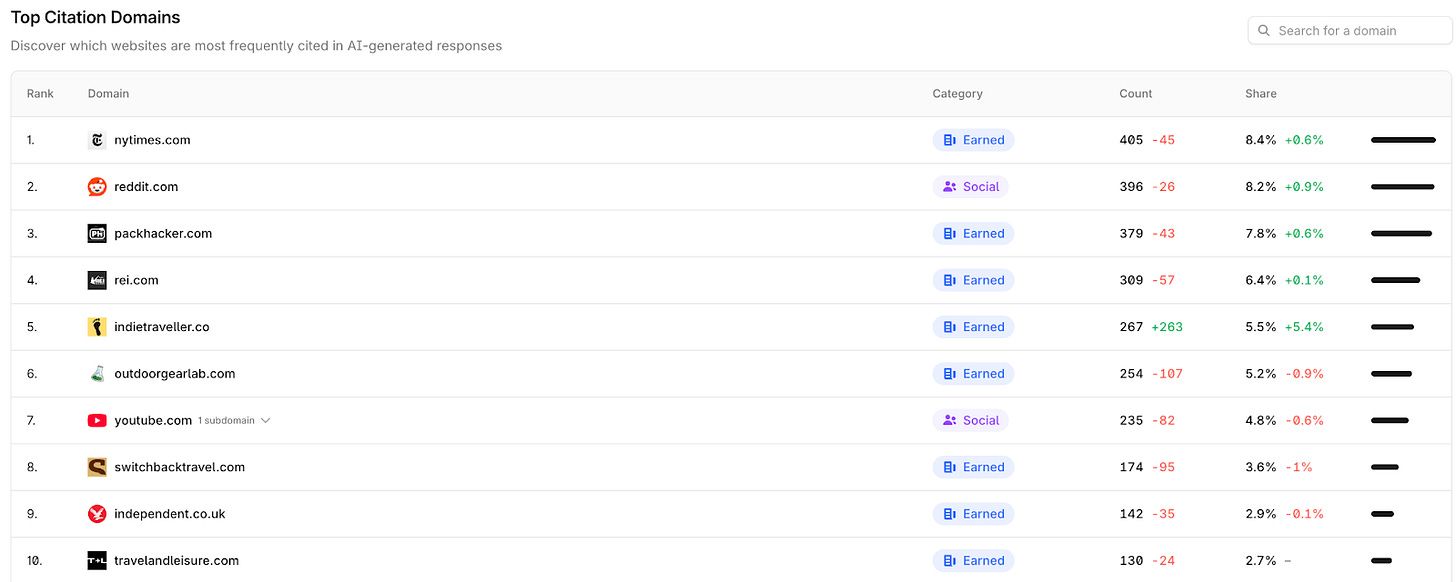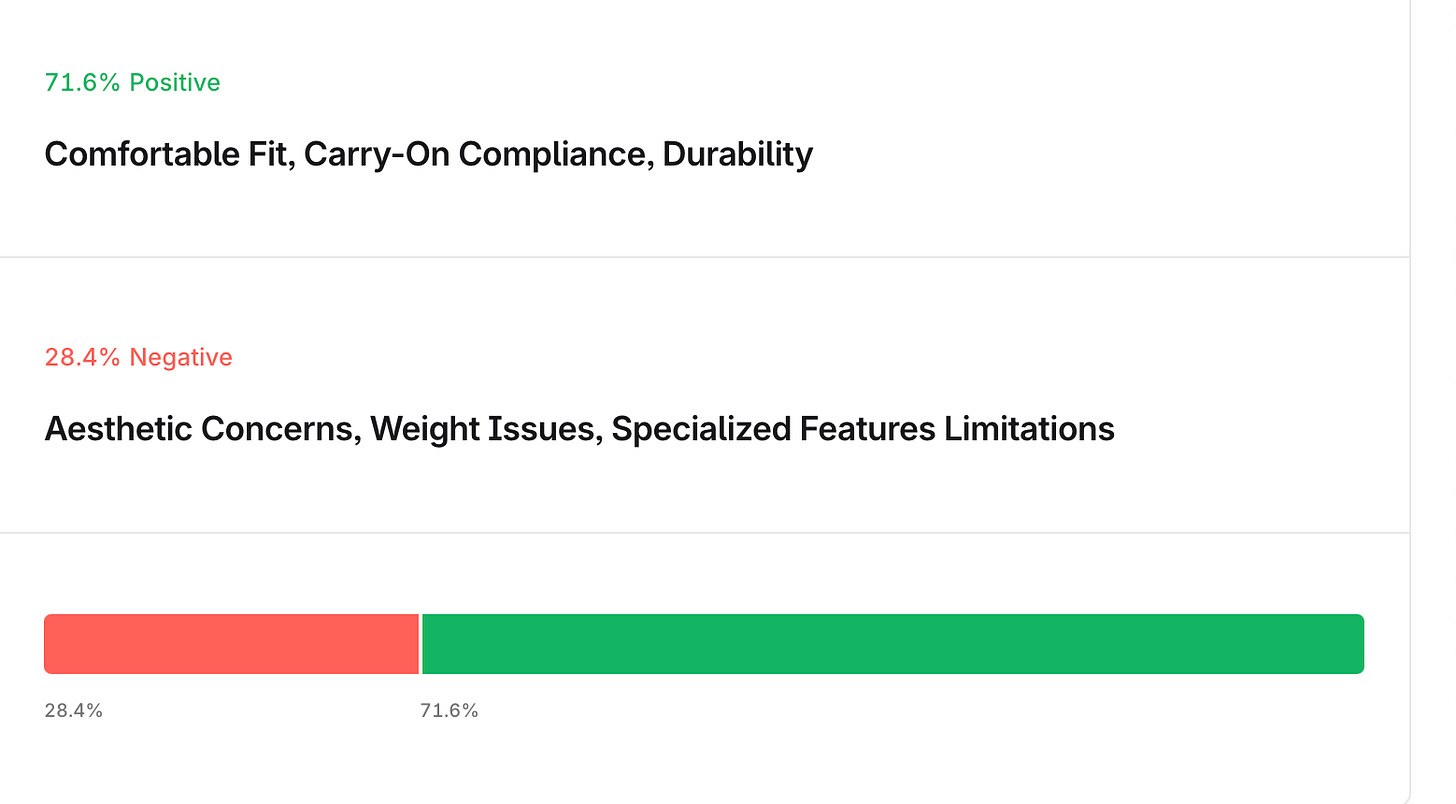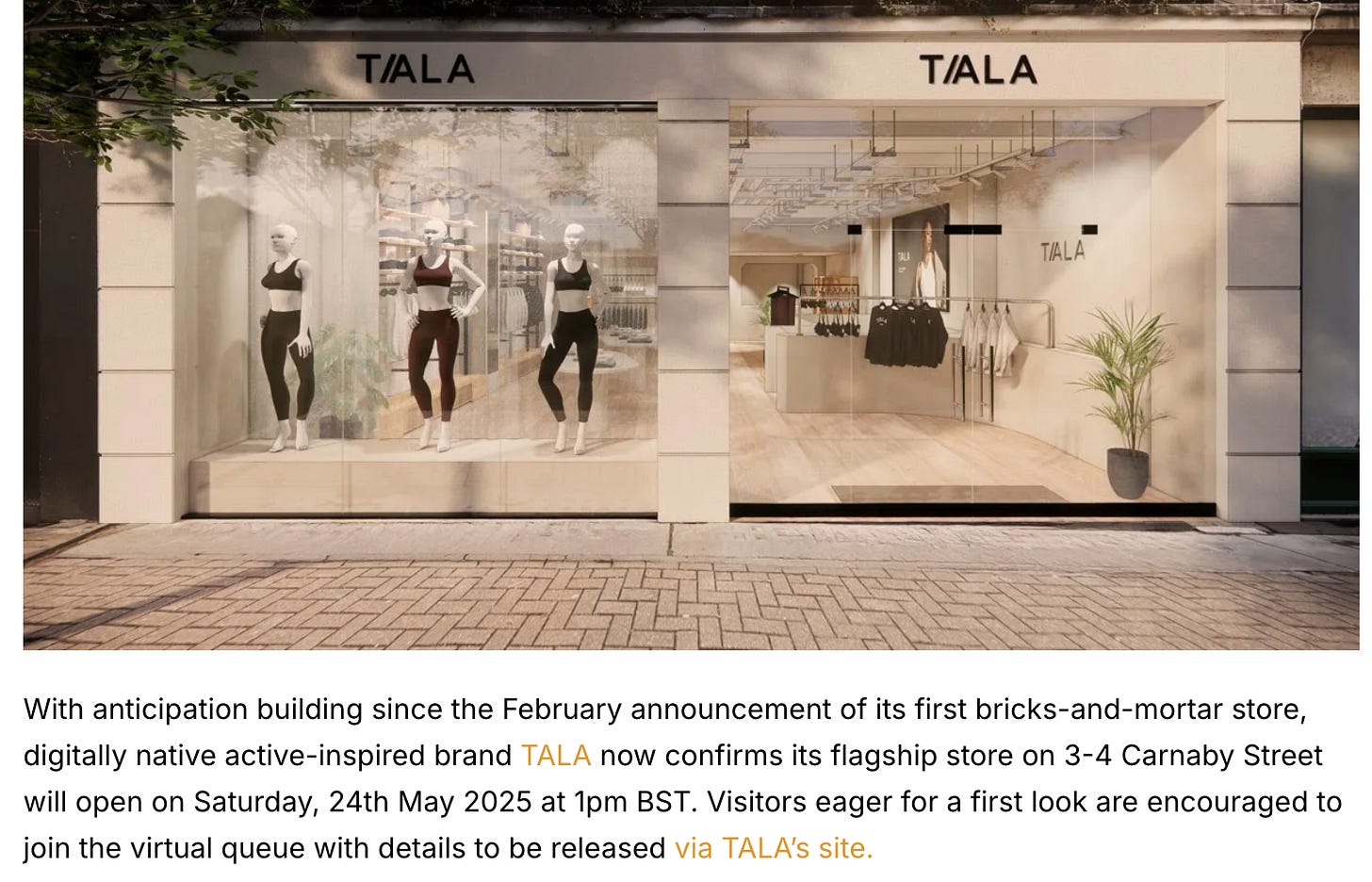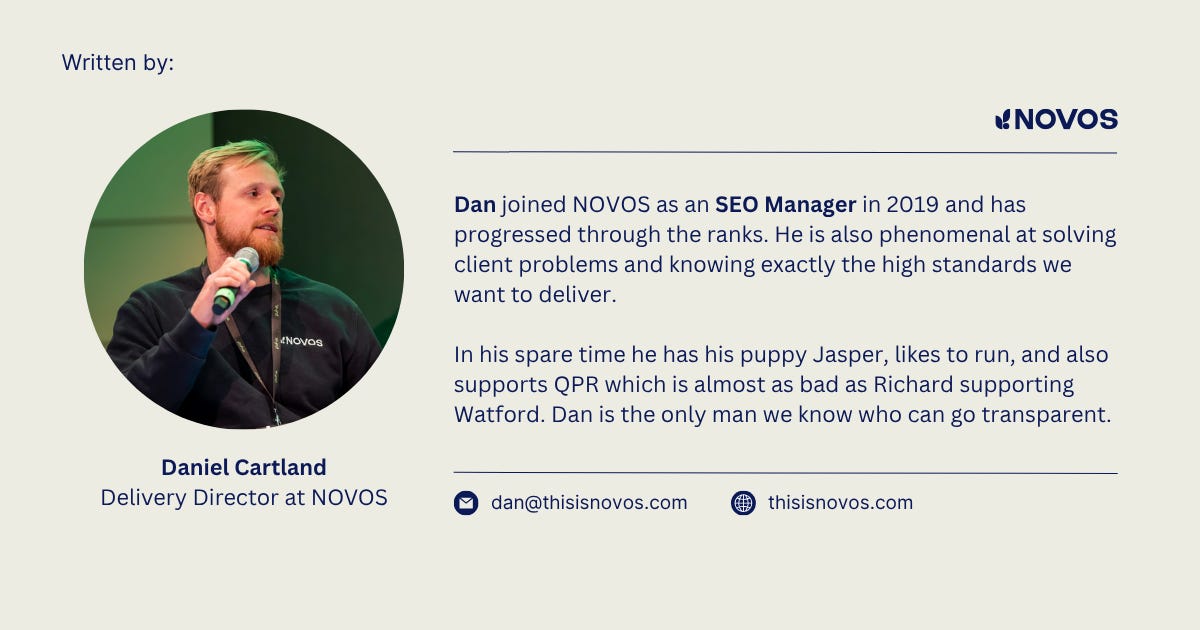AI Search Is Changing Digital PR for eCommerce - Here’s How to Stay Ahead
Branded mentions have emerged as the strongest correlating factor with brand appearance in AI overviews. Here's what this means for eCommerce brands.
The increase in AI Search through Google’s AI Mode and LLMs such as ChatGPT will inevitably change the way we look at Digital PR for eCommerce and retail brands. However, rather than signalling the end of the industry, this also presents a big opportunity for Digital PR if we can diversify and adapt tactics.
Increasing brand visibility - the new goal of Digital PR
Making sure your brand is as visible as possible across key areas of the web will become the priority focus for Digital PR. This changes the focus from links (which rightly or wrongly I would argue is the primary goal for most Digital PR campaigns currently), to being mentioned in sources that are frequently cited by AI.
An early study by Ahrefs shows that branded web mentions are currently the highest correlating factor with brand appearance in AI overviews, which may be an early indicator of things to come.
Source - https://ahrefs.com/blog/ai-overview-brand-correlation/
From links to citations
The way to increase brand visibility for AI Search becomes less about links and more about being mentioned in relevant publications that AI Search are using as citations. This isn’t to say that links won’t have value; they still remain important for SEO and for customers navigating the web! However, with AI Search specifically, they likely become less of the main determinant. This also means traditional link attributes such as nofollow, or links being affiliate are less of an issue. It’s being featured in citations that is key, less about how you are featured.
Not every citation is built the same
This doesn’t mean that it becomes a pure numbers game to get mentions in as many publications as possible. With greater semantic understanding from AI Search, in fact the opposite is true.
Relevance of citations becomes ever more important
Relevance has for a long time been important in Digital PR (see our relevancy tool!), however, AI Search looks set to take this to the next level.
AI Search understands entities and can more readily distinguish the relevance and relationships between entities. Therefore, mentions in citations for which the passages are directly relevant to the brand (or category/product of interest) will be required to have an actual impact on what AI Search returns.
Traditional “strong” links from high authority domains may be less important in an AI Search world since they have much lower relevance than more specific publications with lower authority, but higher relevance. For example, for a photography client, a citation from “DIY Photography” will be worth much more than a citation from “Country Living” due to the increased relevance.
Digital PR campaigns that are tangentially related to a brand at best, but get lots of coverage will become much less impactful when relevance to a brand is what matters (we’re looking at you “dream jobs”!).
That said, getting coverage in a large publication like “Country Living” can still have a positive impact on general brand awareness and perception; therefore, it’s important to distinguish what the goal of the different types of activity is and to have a balance across high authority and high relevance.
Building niche authority - citations per subcategory
As a result of this, different categories could feasibly have very different source citations (ie think women's wear vs men's wear). Good Digital PR currently does this to some extent, but to really push visibility in AI Search, getting into the specific set of source citations will be key to building niche authority. For example, the top citations for “hiking packpages” vs “travel backpacks” are distinct, despite being on related topics (with some expected crossover). The difference for certain niches (ie womens dresses vs mens’s jeans) could be much more significant. To build niche authority, you will need mentions from frequently cited publications within that given niche.
“Hiking backpacks” top citations
“Travel backpack” top citations
For e-commerce, in a reversal from traditional Digital PR, product mentions will become more important than the current focus on building links to categories. Since AI Search can directly surface products that best match a customer query (which themselves tend to be longer and more specific), they can bypass categories to essentially become the shopfront. To ensure products are surfaced, these should ideally be mentioned directly from highly cited sources.
Sentiment becomes even more key.
Whilst often spoken with tongue-in-cheek, the premise that a link from negative publicity was a positive for SEO because it is a link maintained the old adage that “any publicity is good publicity”. I do not doubt that Google already does consider sentiment within their analysis of links, however, this is set to become even more prevalent and important in the AI Search world which has a more semantic understanding of the context of information.
Understanding the sentiment from citations and actively working to improve this will become key for Digital PR in an AI Search world.
This analysis and insight alone will be fascinating for brand and product teams, as AI Search reporting aggregates your brand's perception across the internet. Currently, brands only have their customer reviews to gauge sentiment. Still, in theory, this reporting should be able to analyse customer reviews, external publications, social media, Reddit and video review sentiment (both internal and external data).
Aligning Digital PR with onsite content
Even focusing on building relevant citations, Digital PR needs to take this a step further and ensure that the context of mentions from citations matches the context of the onsite content. AI Search must have a comprehensive view of the entities your site is associated with, based on information from citations AND onsite.
Examples include:
Product USPs
Product details
Brand values
Brand information
Product comparisons
If there is a mismatch between information from off-site citations and onsite, this weakens the entity and could make a brand less likely to appear in AI Search. A poor onsite experience can no longer be “overpowered” with a big backlink profile, as has seemed more likely to be the case in traditional SEO & Digital PR. In the pas,t SEOs would likely chase keywords over brand messaging and clear USPs of products and supercharge this with a strong backlink profile. However, with AI Search,, the focus becomes more about product/brand clarity and brand consistency.
This increases the responsibility of Digital PR, who must work with onsite teams to ensure a cohesive approach and ensure that the information publicised across the web is shown and matches what is discussed onsite.
For example, a recent press release about TALA’s new store describes them as “active-inspired brand” and later links to key collections. This perfectly matches TALA as an entity, since the homepage title is “Activewear you’ll feel good in, and good about” and also contains those key collections referenced in the global nav and many on the homepage. Similarly, the details given about the store are referenced on TALA’s website on a specific page.
Since these details match, it strengthens what AI Search platforms understand about TALA as an entity.
Is it all about just how big your brand is?
With brand visibility becoming the main priority for Digital PR, it may be easy to assume that the biggest brands will always be the biggest winners.
However, this is not necessarily the case. Focusing on brand differentiation will be the big factor since AI Search can much better understand the context and nuance between brands and products and their USPs. This does mean that brands need actual, tangible benefits to succeed.
However, this does mean that a smaller brand can do very well in AI Search if they lean in on their brand and product differentiators. With AI Search able to review and match chunks within passages across citations and from source websites, coupled with customer searches getting longer and more specific, AI Search should mean it’s not always just the biggest brand which wins.
How Digital PR tactics will change - our predictions
With these changes to how Digital PR may adapt, how will this impact the day-to-day work and tactics of teams?
Types of tactics
Listicle inclusion for eCommerce as source citations compares products, for example, product gift guides
Renewed focus on industry publications to convey brand authority and authenticity
User Generated Content - real experiences become a goldmine to convey the real customer experienc.e
Strategy
More product-led to drive niche authority for the brand within the category
More brand-relevance led
Less tangentially related campaigns for links (ie dream jobs)
Citations vs links
More relevant & specific to categories
Less emphasis on “red top” authority chasing (though it still has its place for brand awareness!)
Less “link-focused” as a KPI of success.
How do you see Digital PR evolving with the rise of AI Search? If you’re interested in seeing how you can increase your visibility in organic search and AI Search via Digital PR, contact us today!




